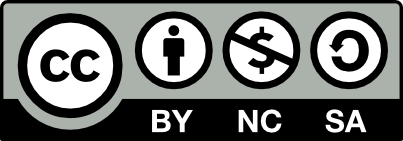/ State exaction and peasant resistances in the Cibao during the American occupation of 1916-24
Downloads
Abstract
In the Dominican Republic, the period of the American occupation of 1916-24 was characterized by the strengthening of the State and by its greater interference in rural society. It is known that from the beginning of the intervention, resistance movements to it occurred and that in the East of the country a peasant based guerrilla movement developed in opposition to the North American forces and the penetration of foreign sugar consortiums. On the other hand, little attention has been paid to the less conspicuous forms of resistance in the East, and it can be thought that in the rest of the country the peasantry maintained a position of absolute calm in the face of the measures of the interventionist regime. However, this impression is only partially true. In effect, a regional study, concentrated in the province of Santiago, shows that the peasantry of Cibao developed forms of opposition to the policies of the military government that, although they did not lead to an armed struggle, contributed to destabilizing the regime.
Keywords:
Peasant, military intervention, Dominican RepublicReferences
Las referencias, según el estilo de citación de esta revista, están como notas al pie.
License
Copyright (c) 1993 Journal ECOS UASD

This work is licensed under the Creative Commons Attribution-Noncommercial-NoDerivs 4.0 International license. https://creativecommons.org
Most read articles by the same author(s)
- Pedro L. San Miguel, Economic crisis and state intervention. The Dominican Republic tobacco valorization plan , Journal ECOSUASD: Vol. 2 No. 3 (1994): ECOS
- Pedro L. San Miguel, Máximo Grossi, Jr., Praxis, history and philosophy in the 18th century. Texts by Antonio Sánchez Valverde , Journal ECOSUASD: Vol. 4 No. 5 (1996): ECOS
Similar Articles
- Emilio Cordero Michel, Last publications of dominican history years 1998-2000 , Journal ECOSUASD: Vol. 6 No. 8 (1999): ECOS
- Reina Rosario, The dominican Catholic Church and its relationship with the State (1954-1968) , Journal ECOSUASD: Vol. 21 No. 13 (2016): ECOS
- Emilio Cordero Michel, Latest publications of dominican history. Years 1993-1994-1995 , Journal ECOSUASD: Vol. 3 No. 4 (1995): ECOS
- Francisco Antonio Avelino, Elogio y crítica del pensamiento de Américo Lugo Praise and criticism of Américo Lugo´s thought , Journal ECOSUASD: Vol. 1 No. 2 (1993): ECOS
- Roberto Cassá , Social movements during the North American military intervention in the Dominican Republic , Journal ECOSUASD: Vol. 6 No. 8 (1999): ECOS
- Roberto Cassá , The tragic epic , Journal ECOSUASD: Vol. 5 No. 6 (1997): ECOS
- Michiel Baud, The emergence of a creole peasantry. Tobacco production in the Hispaniola, 1500-1870 , Journal ECOSUASD: Vol. 4 No. 5 (1996): ECOS
- Emelio Betances, Church, modernity and politics in the Dominican Republic , Journal ECOSUASD: Vol. 6 No. 8 (1999): ECOS
- Roberto Cassá , Rojas and Espaillat in the vortex of cibaeño liberalism , Journal ECOSUASD: Vol. 4 No. 5 (1996): ECOS
- Roberto Cassá , One hundred years of the Russian Revolution , Journal ECOSUASD: Vol. 25 No. 15 (2018): ECOS
You may also start an advanced similarity search for this article.









